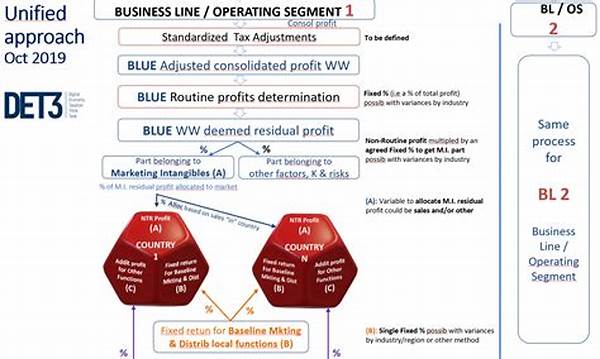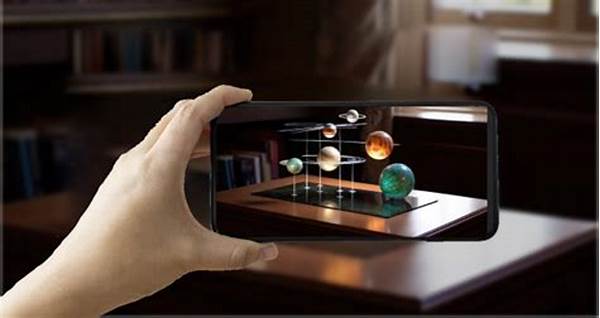The world of graphic design is perpetually evolving, with new tools, trends, and techniques constantly emerging. In this dynamic environment, the concept of a unified graphic design approach has gained prominence. This approach focuses on ensuring cohesion and harmony across various design elements and platforms, ultimately leading to a stronger, more recognizable brand presence.
Read Now : Crafting Unique Brand Color Identity
Benefits of a Unified Graphic Design Approach
A unified graphic design approach offers numerous benefits for businesses and creatives alike. By maintaining a consistent visual language, brands can enhance their recognizability and build a stronger connection with their target audience. Consistency fosters trust and reliability, essential qualities for long-term brand success. Additionally, a unified approach streamlines the design process, saving time and resources by reducing the need for constant adjustments and redesigns.
Incorporating a unified graphic design approach also helps in effectively communicating a brand’s values and message. When every piece of design conveys the same tone and style, the brand narrative becomes clearer and more compelling. This cohesion ensures that regardless of the medium, whether digital or print, the audience perceives a seamless brand experience. Furthermore, a unified approach can improve collaboration among team members, as clear guidelines eliminate ambiguity and foster more productive creative contributions.
Key Elements of a Unified Graphic Design Approach
1. Consistency in Visual Elements: A unified graphic design approach involves consistent use of colors, typography, and imagery, which aids in brand recognition.
2. Cohesive Brand Messaging: This approach ensures that the tone and voice of the brand are consistent across all platforms and materials.
3. Streamlined Design Process: It simplifies the design process, reducing time and effort by eliminating unnecessary revisions.
4. Enhanced Brand Identity: A unified approach strengthens the brand identity, creating a more profound and lasting impact on the audience.
5. Effective Audience Engagement: The approach leads to more meaningful interactions with the audience, fostering stronger relationships and loyalty.
Implementing a Unified Graphic Design Approach
To implement a unified graphic design approach, start by establishing clear brand guidelines that detail the use of visual elements such as color palettes, typography, and logos. These guidelines serve as a reference for designers and marketers, ensuring that every piece of content adheres to the brand’s identity. It’s crucial to regularly review and update these guidelines, accommodating any new trends or changes in brand strategy.
Training sessions and workshops can be instrumental in familiarizing team members with the principles of the unified graphic design approach. Encouraging open communication and feedback within the design team ensures that everyone is aligned and working towards a common objective. Additionally, utilizing collaborative tools and platforms can enhance coordination, enabling seamless integration of new ideas while maintaining consistency.
Challenges in Achieving a Unified Graphic Design Approach
1. Maintaining Flexibility: While consistency is key, it may sometimes clash with the need for creativity and innovation. Balancing these aspects is crucial for success.
2. Updating Brand Guidelines: Keeping guidelines current and relevant can be a challenging and ongoing task, particularly in a fast-paced industry.
3. Team Coordination: Ensuring all team members are aligned with the unified graphic design approach requires clear communication and effective collaboration.
Read Now : Techniques For Strengthening Plot Structure
4. Adapting to Different Platforms: Applying a consistent design across various platforms with unique specifications can be complex.
5. Cost Implications: There may be financial constraints in redesigning existing materials to align with new guidelines.
Aligning Creativity with the Unified Graphic Design Approach
Creativity is the driving force behind any successful design, and a unified graphic design approach does not stifle this creativity; rather, it channels it towards a cohesive brand presence. Designers are encouraged to explore innovative ideas that fit within the established guidelines, ensuring originality while maintaining consistency. This balance between creativity and structure often leads to a more engaging and dynamic brand expression.
Designers should view the unified graphic design approach as a framework within which their creativity can flourish. It provides a solid foundation, allowing creative energies to be directed in a way that enhances the overall brand message. With the right mindset, designers can find exciting ways to refresh and evolve the brand identity without stepping outside the established boundaries. This approach ultimately fosters an environment where creativity and coherence coexist harmoniously.
The Role of Technology in Unified Graphic Design Approach
The integration of technology in a unified graphic design approach is indispensable in today’s digital age. Advanced design software and platforms offer immense potential for creativity while ensuring that all design elements remain cohesive. Tools like shared digital asset libraries and collaborative design platforms facilitate uniformity by ensuring all participants are using up-to-date assets and adhering to brand guidelines.
Moreover, technology allows for efficient communication and collaboration among team members, regardless of their physical location. Real-time feedback mechanisms streamline the design process and enhance productivity. Automation tools and AI-powered software can assist in maintaining consistency across various outputs, reducing the likelihood of human error. By embracing technology, designers can not only enhance efficiency but also explore new avenues for creative expression within a unified graphic design approach.
Building a Strong Brand with a Unified Graphic Design Approach
A successful unified graphic design approach is instrumental in building a strong and distinct brand. By providing a consistent and seamless visual experience, brands can establish trust and credibility among their audience. This approach enables brands to stand out in the crowded marketplace, offering a unique identity that resonates with customers and potential clients.
Creating a memorable brand requires more than just visual consistency; it requires an emotional connection with the audience. The unified graphic design approach allows brands to weave their story through visuals, creating a lasting impression that goes beyond mere aesthetics. By delivering a comprehensive brand experience, companies can engage with their audience on a deeper level, fostering loyalty and advocacy.
Final Thoughts on Unified Graphic Design Approach
In summary, a unified graphic design approach lays the foundation for cohesive and effective branding. It emphasizes consistency across all design elements, from colors and typography to messaging and imagery. This approach not only enhances brand recognition but also streamlines the design process, saving time and resources.
By implementing clear guidelines and encouraging collaboration, companies can overcome challenges and ensure that their brand’s visual identity remains strong and relevant. A unified approach harmonizes creativity with strategic consistency, empowering brands to communicate their values and message effectively across diverse platforms. As the design landscape continues to evolve, adopting a unified graphic design approach will be crucial for brands looking to maintain a competitive edge and forge lasting connections with their audience.



